It may seem as though tilling is just as simple as turning over and loosening the soil, but it's more than that. Tilling is an ancient agricultural practice with origins that go back thousands of years. The concept of tilling is the same today as when it was first developed by ancient civilizations such as the Egyptians and Greeks.
In fact, nothing substantial has changed about it despite the progress and innovation that have occurred in agriculture since then, except for motorized tillers that enable us to cut the time spent tilling in half, making the process more efficient and faster.
Furthermore, there seems to be this preconceived notion that you are always expected to till the soil every single time you plant something. We'll address this misconception and show you how and when tilling can be beneficial or detrimental to the growth and yield of your plants.
And finally, we will also show you the best practices and the best tools to use for different soil types so read on!
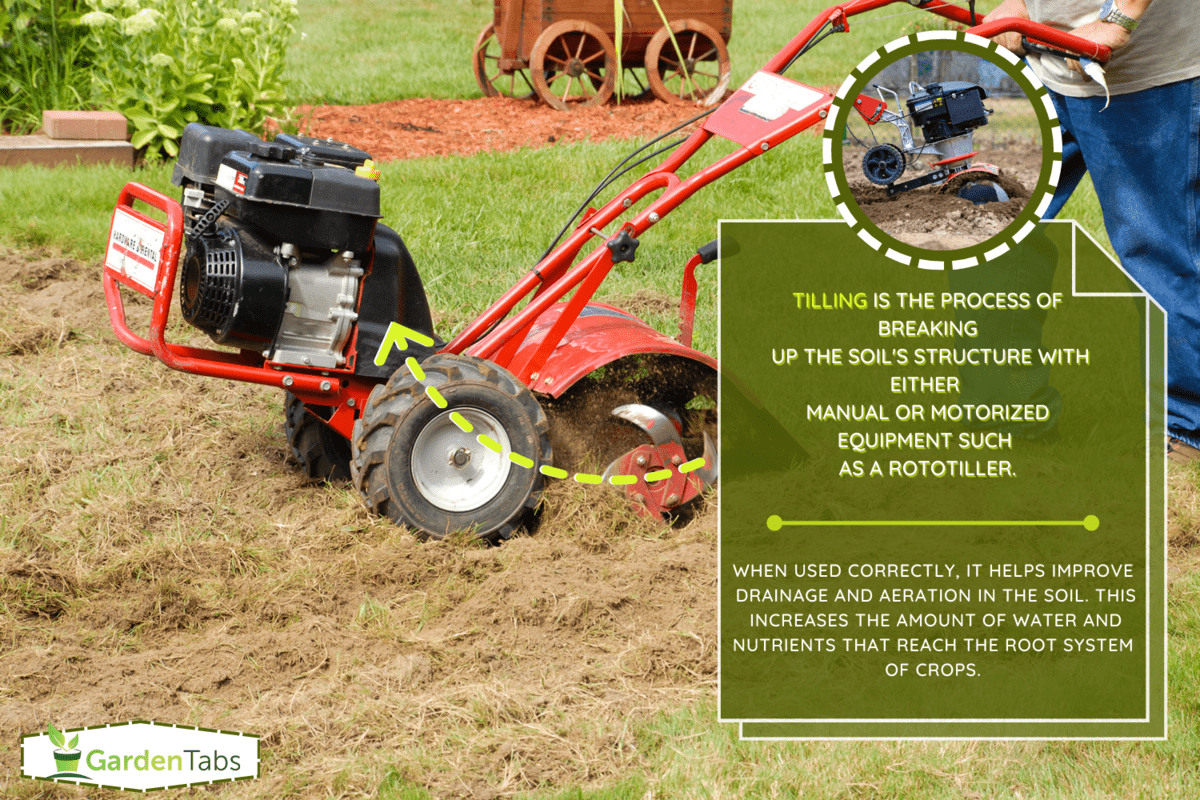
What Is Tilling?
Tilling is a simple process involving several key steps. It is the term used to describe the process of plowing the soil, or breaking up and loosening the soil.
Tilling is a critical part of the agricultural cycle and is often done in combination with other techniques such as seeding or applying fertilizer. It is also an important part of maintaining healthy soil and improving crop yields.
Do I Need To Till My Garden [And How To]?
Tilling is the process of breaking up the soil's structure with either manual or motorized equipment such as a rototiller.
When used correctly, it helps improve drainage and aeration in the soil. This increases the amount of water and nutrients that reach the root system of crops.
However, if done incorrectly, tilling can cause more harm than good to your crops, because it can destroy beneficial microbes and natural habitats.
You only till soil if it's compacted. Compacted soil is hard and dense. As a result of the increased compaction, the plant's roots are unable to absorb enough nourishment. This makes the plant’s growth slower, which in turn, decreases its growth rate.
Eventually, the plants’ growth comes to a halt. Plants can still grow on compacted soil, but it's obviously not a good idea to plant in a soil condition like this if you're growing your own food in the garden.
To sum it all up, tilling is all about improving soil structure to prepare the soil for planting. However, if you find the soil to be loose and fluffy, there's no need to till.
Here are the pros and cons of tilling:
Pros
- Breaks up compacted soil and is particularly useful in clay soil.
- Exposes nutrients that may have been buried underneath the topsoil.
- Opens up the spaces between the soil particles, allowing for better air penetration and water and nutrient absorption.
Cons
- May disrupt the natural environment of microbes that are beneficial to plant growth and as a result, kill them off.
- It can also lead to erosion, and in some cases, even cause soil compaction.
- In the long term, tillage can result in more weeds, because it exposes dormant weed seeds and makes it easier for them to germinate.
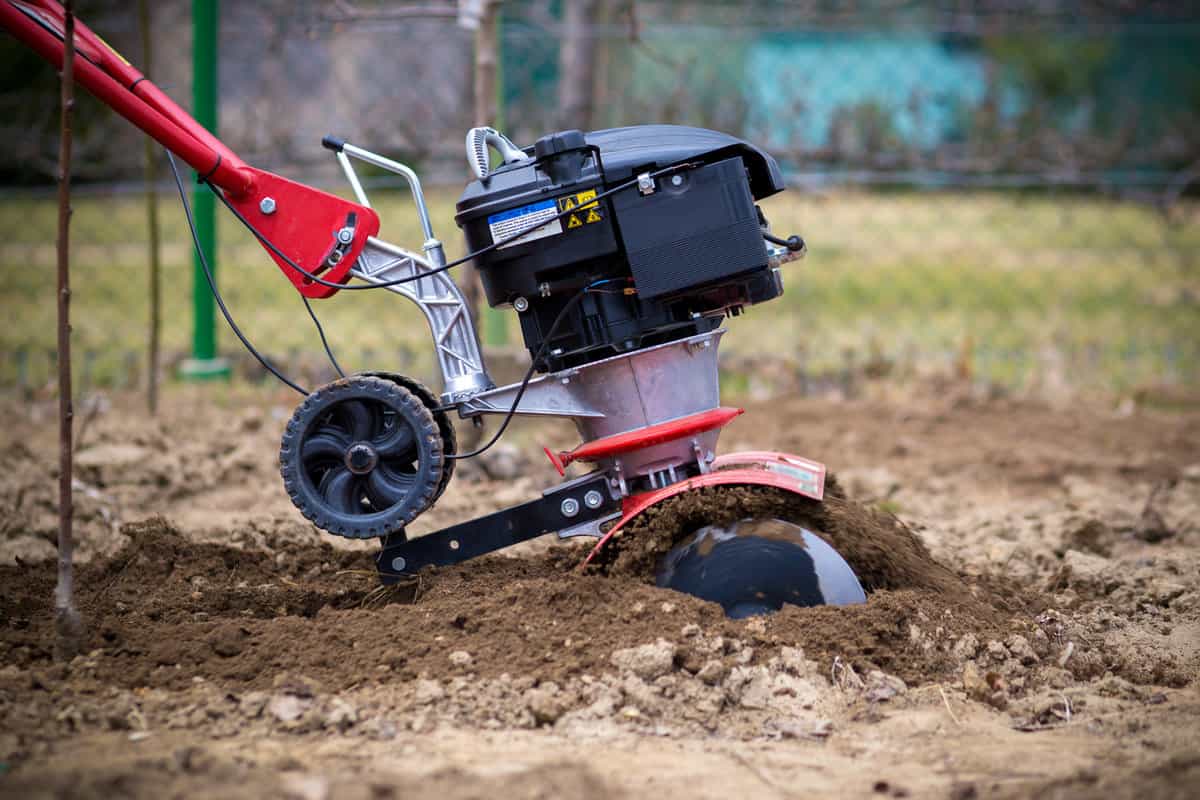
How To Till Soil For Garden
Tilling is not rocket science and everyone can do it. However, there are a few things you need to know before you start tilling. Unless the soil quality is extremely poor, it is important to remember that you should not go deeper than 12 inches when tilling the soil.
Tilling the soil deeper than 12 inches might disrupt the natural environment where the essential microbes that keep our plants healthy live.
Here are the steps on how to till and prep soil for a garden:
1. Mark the spot where you want to till
When you start tilling the soil, it is important that you know exactly where you are going.
2. Remove all weeds in sight by the root
To help your plant grow quickly, you need to pull out any weeds in the patch by the root to avoid the possibility of regrowth. As we know, weeds are suckers that live off of the soil's nutrients.
3. Slowly move the tiller across the soil like you're mowing.
Begin moving the tiller across the soil. Slowly work it back and forth with a bit of force so as to break up the ground (if you're using a manual rotary tiller) or make long strokes but in one direction (motorized).
The goal is to get the soil mixed up. Do not till the soil if it's wet as it might cause the soil to clump.
4. Remove rocks and other debris you might come across with
You'll need to separate them out as you move through the row. This means getting rid of them when you see them.
5. Add sulfur or ground limestone
Limestone and sulfur help break down the clay particles in the soil, creating a looser soil structure that allows water to move through it quickly and easily, and the nutrients to be more accessible to the plant roots.
6. Add organic fertilizer
The type and amount of fertilizer you add to the soil depends on the soil test results. You can use a soil test kit to determine the nutritional needs of the soil and then choose a fertilizer accordingly. Some fertilizers contain more nutrients than others.
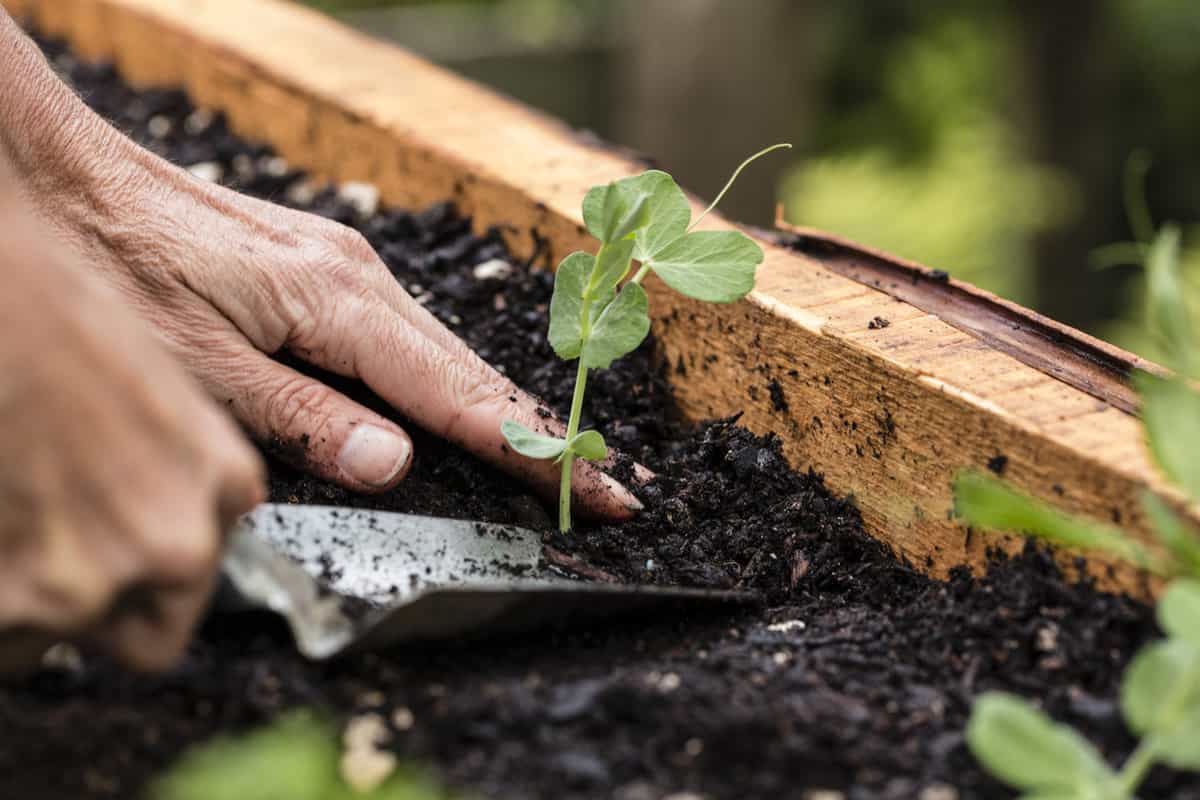
Should I Till My Raised Garden Bed?
You don't need to till a raised bed to prepare it for planting. All you need to do is dig down a few inches to loosen the soil so you can plant seeds, roots, and other plants into it.
To encourage roots to grow, add organic matter like compost, leaves, and peat moss. Over time, these materials will become incorporated into the soil, creating a fertile, plant-friendly environment.
Should I Till My Garden In Fall, Spring, Or Both?
The best time to till is right after winter, between early March and early June. The reason is that during the winter months, the soil has compacted and become hard. Tilling allows air into the soil to help loosen the compaction.
How Deep Should I Till My Garden?
When it comes to tilling, it can be difficult to gauge the correct amount of depth to apply. A good starting point for determining the correct depth for tilling is 4 to 8 inches for a garden that has been around for a while, and 8 to 10 inches depth for a new garden.
Should I Fertilize Before Or After Tilling?
If you have tilled your soil, it means that you have loosened the soil and broken it down into smaller particles. So it just makes sense to fertilize after tilling and not have it the other way around. This will ensure that all of the nutrients are properly absorbed by the soil and can be used by your plants. You don't want your fertilizer to be sitting on large clumps of soil.
Can I Till My Garden After Rain?
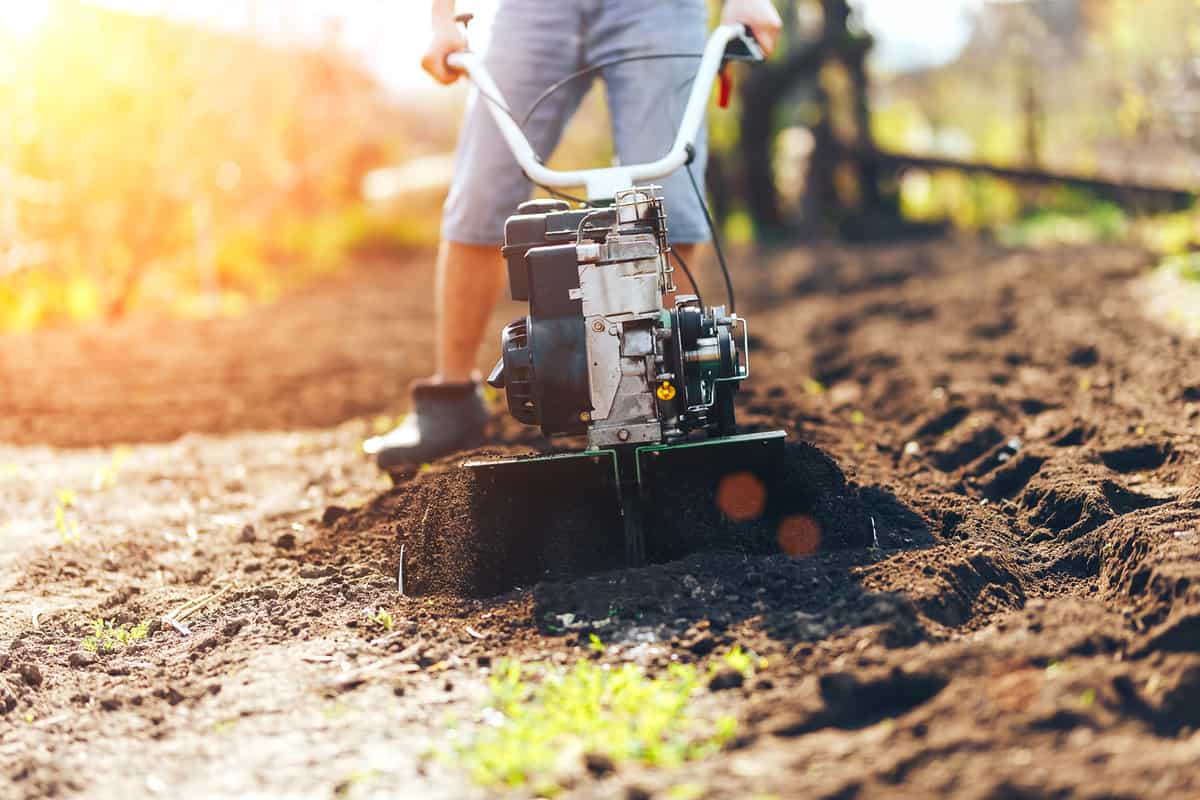
When tilling after rain, wait until the soil is semi-dry. If you do it too soon after the rain, you run the risk of compacting the soil. Compacted soil will limit the amount of water that can reach the roots and, therefore, reduce the growth of your plants. Wait for a day or two after rain for the soil to dry out and then till.
Here's a video demonstration of how to check soil moisture to see if the soil is ready for tilling or not:
What Tools Are Helpful In Tilling My Garden?
The following tools are indispensable and should be part of every gardener's arsenal:
- Hoe
- Rake
- Shovel
- Garden fork
- Hand tiller
- Long-handled tiller
- Motorized rotary tiller
- Wheelbarrow
The easiest way to till a garden is to use a rotary tiller.
Best Types Of Garden Tillers/Cultivators For Home Use
1. Fiskars Hand Tiller/Cultivator
Fiskars hand tiller and cultivator are great for tilling the garden. They are ergonomically designed to fit into the contours of your hand. The tines are sharp and cut easily into the soil, which makes tilling your garden much easier.
Click here to see this hand tiller on Amazon
2. Sun Joe Electric Tiller and Cultivator
When you need to go out in the backyard to do some gardening, but the sun is beating down and you have a long list of things to do inside, this little tiller will make short work of getting your garden ready for planting. It has six durable steel tines for turning the soil and a powerful 12-amp motor for easy operation.
Click here to see this electric tiller on Amazon
3. Garden Weasel Rotary Tiller/Cultivator
If you love gardening and are looking for a great tiller, then you need to consider the Garden Weasel rotary tiller. This tiller features 3 interchangeable rotary blades which make it easy to break up compacted soil and dig out weeds. This tiller is made from carbon steel and it's rust-resistant.
Click here to see this rotary tiller on Amazon
What Is The Best Tiller For A Small, Medium, And/Or Large Garden?
For small to medium gardens, a front-line tiller is a great choice. For larger gardens, it's important to select a tiller that can take on the job of digging out weeds and loosening the soil for planting on a larger scale. This is where the rear-tine tiller excels.
What Is The Best Tiller For Your Soil Type?
If you are looking for a tiller that can handle rocky terrain, you need a tiller with strong steel construction that will not crack or bend when encountering hard ground. The Tacklife classic tiller is the tiller you want.
If you have a clay soil type, The Yardmax YT4565 tiller has become one of the most popular tillers used by gardeners because of its ability to effectively work in clay soil.
If you have sandy soil, you may check out this video and see for yourself how this rear-tined tiller is pulverizing sandy soil into fine soil particles:
What Is The Best Tiller For Breaking Up Roots?
If you're dealing with soil with stubborn roots and you want to break them up and create a more open soil structure, you need a tiller that is strong enough to handle the task.
The Sun Joe electric tiller comes with a powerful engine, which makes it easier to move through the thick root growth and pull the soil out with ease.
Click here to see Sun Joe electric tiller on Amazon
How To Till A Garden Without A Tiller And/Or With A Shovel?
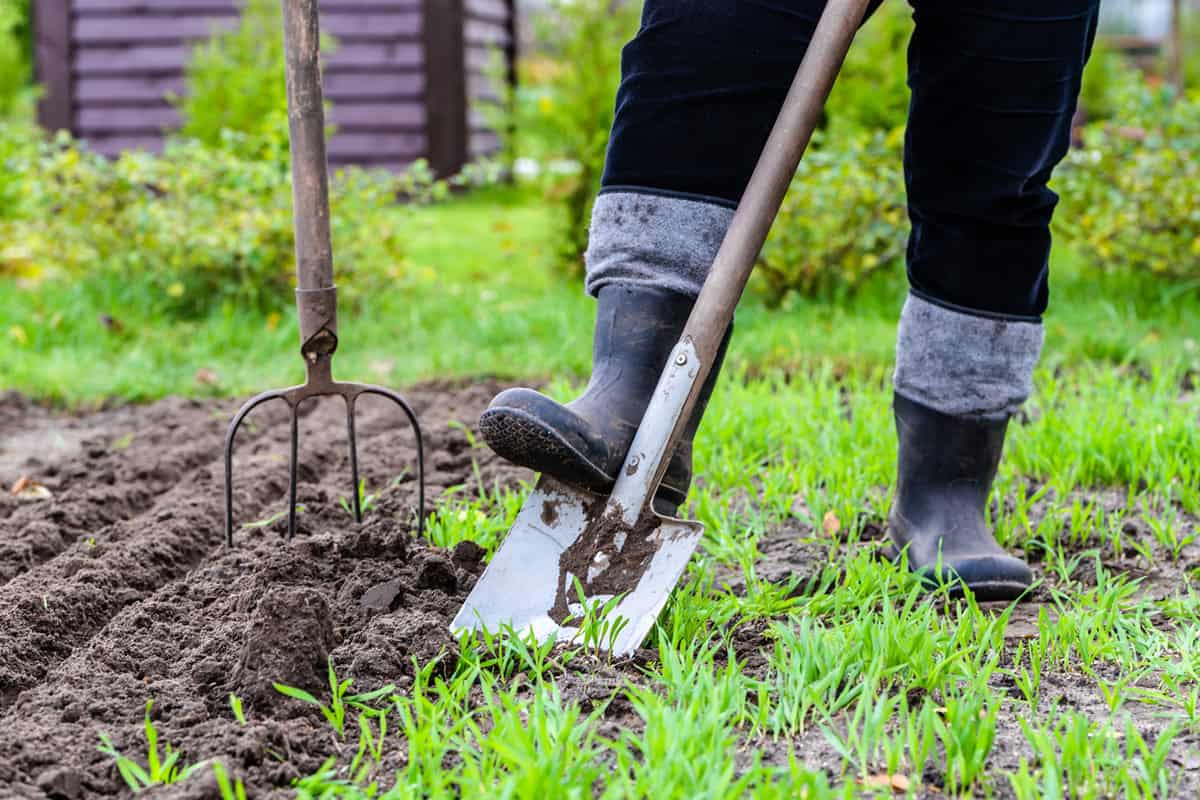
While it's possible to till the soil by hand, we don't recommend it. Tilling is a time-consuming and exhausting process. Instead, we suggest you use a spade or shovel. A garden fork is also a great tool to have around, as it can be used to lift weeds out of the soil and at the same time till the soil.
Below are the steps to till your garden without a tiller. You may also refer to the steps on how to till a garden with a tiller above. They may be variations in the steps but they basically say the same thing.
1. Weed out
First, clear all of the debris out of your garden. Take a look at the weeds and remove them from the garden as well. Once you've cleared the debris, you can start the tillage process.
2. Start digging
Next, take your shovel and dig in a circular motion as you would to ice cream with a spoon at different points in the garden.
You can start digging at one corner of the garden and work your way towards the opposite corner. Do it in a uniform fashion until you've crushed the lumps of soil and tilled the entire area.
A garden fork works more efficiently than a shovel because the fork tips are more well-suited for this task.
3. Put some fertilizer
After you have completely tilled the garden, put a little bit of fertilizer into it. You can use organic fertilizers, compost, manure, or even blood meal to make your garden healthier. You may have to apply ground limestone or sulfur if the soil is a bit clayish.
What Is The Difference Between A Garden Tiller And A Cultivator?
Both types of equipment are extremely powerful and effective in their own ways. But there are some differences between them that are worth considering. The main difference between these two garden implements lies mainly in the way they operate.
The lawn tiller has a spinning blade that is pushed into the ground, breaking it up. Similarly, a garden cultivator has a spinning blade. However, its purpose is to simply mix an already tilled soil and turn it over to incorporate compost or fertilizer. This may not be the case if you have a manual hand cultivator but the idea is the same.
How To Use A Garden Cultivator
A garden cultivator is an indispensable tool for the gardener. Garden cultivators come in a wide variety of designs, each of which is meant to perform a specific function. This section will cover the types of garden cultivators and some helpful tips on how to use them so you can get started on your gardening adventures today!
How To Use A Hand Cultivator
This is probably one of the easiest tools in your entire garden to use. All you need to do is just push down on the soil and pull the handle back and forth. It can help prepare the ground for planting, especially if there are any weeds to be removed.
Here are the steps on how to use a hand cultivator:
1. Wear gardening gloves
Many gardeners recommend wearing gloves whenever using a hand cultivator. This helps to prevent callouses or blisters from forming, and it also protects your hands from scratching.
Gloves are great if you have a tendency to pick up dirt or soil on your hands, too. Also, using gloves ensures you don’t accidentally grab something sharp such as broken pieces of glass or rocks while you’re using your hand cultivator.
2. Outline sowing reference lines
Creating straight lines in your garden is easy if you are able to hold the tiller steady when you are doing it. Simply drag the cultivator through the soil from one point to another and the tines will cut into the soil, forming a straight line.
If you are unable to hold the tiller steady, you may end up cutting the soil unevenly and creating ruts in the soil. This is because the tiller will cut the soil differently as you drag it from point A to point B.
3. Turn the soil
The key is to start working the soil, but don't overwork it. The soil should feel loose and easy to dig through. If you find yourself fighting against the soil to break up clumps, that's a sign that the soil is too compacted and needs to be loosened.
If you keep digging away at a compacted patch of soil, this means the soil was not properly tilled. You need to gently loosen the soil by pulling it apart instead.
Here's a quick video demo on how to use a hand cultivator:
How To Use A Disc Cultivator
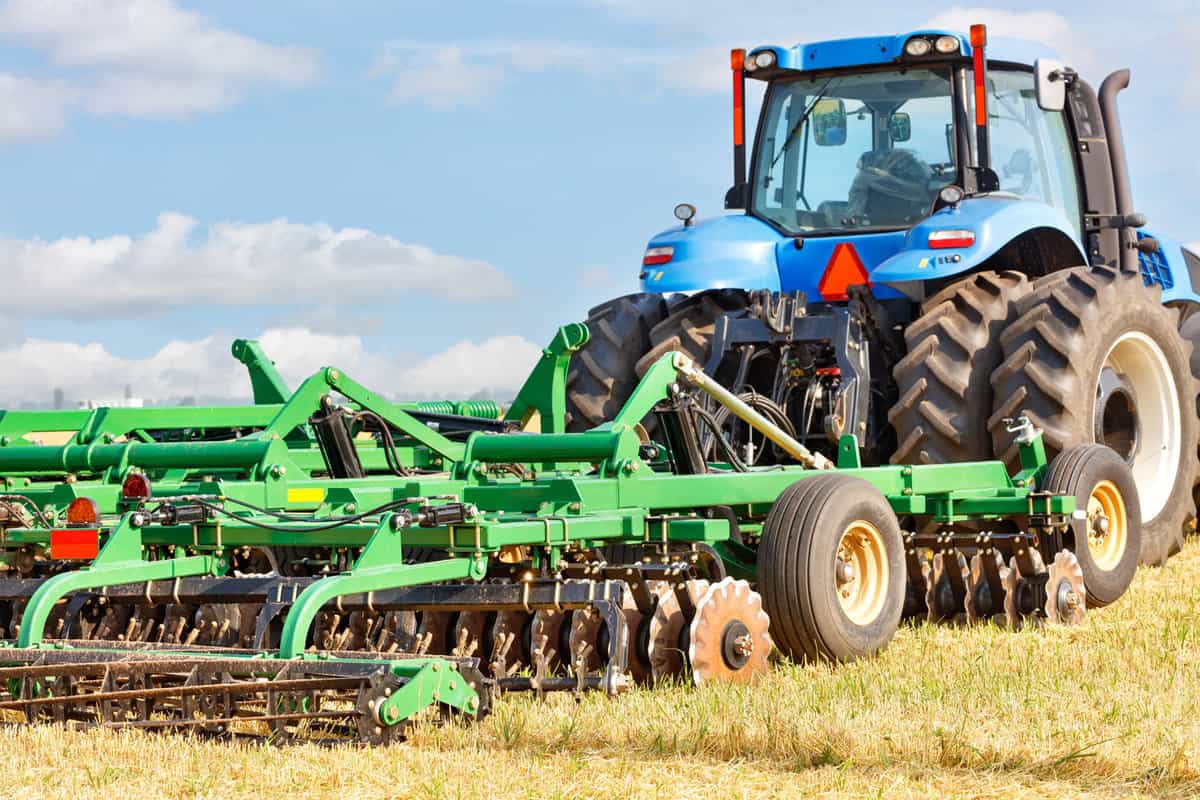
A disc cultivator is used to loosen the soil to prepare the planting site and to break up clods of soil so that seedlings or young plants can penetrate the soil. It also functions as a weeder while you're cultivating the soil.
A disc cultivator also has an advantage over a hand cultivator and other implements such as hoes and rakes because it does not require much effort on the part of the gardener.
Here is how you cultivate the soil using a disc cultivator:
1. For general cultivation projects
A disc cultivator is a tool that consists of three tines that roll on the ground. This allows you to work in small areas easily. Use all three tines and work on the soil back and forth until you achieve the desired soil quality.
2. Working around soil with young plants
Detach the middle tine so you have space to work around soil surrounded by young plants. This will allow you to move the equipment and work on the soil without harming the plants.
3. Navigate around tight spaces
Detach the two tines and use the middle tine to navigate around tight spaces.
You may check the video below to see how a disc cultivator work:
How To Use A Rotary Cultivator
There are two types of rotary cultivators: hand-powered rotary cultivators and motorized cultivators. The hand-powered rotary cultivators are the older type and are commonly used in the backyard and small gardens. They are very handy, portable, and easy to use.
However, there is a downside to it: they are not very efficient and they require a lot of effort from the operator. On the other hand, motorized rotary cultivators are designed to be more efficient than hand-powered cultivators and are powered by a motor.
There's really not much difference between a hand-powered rotary cultivator and a disc cultivator. You may refer to the steps above on how to use a rotary cultivator. They're basically similar both in design and functionality.
The video below might help:
How To Use A Long-Handle Cultivator
Long-handled cultivators allow you to cultivate your garden without having to bend over all day. Think of it as a hand cultivator with a long handle. This means you can use your shoulder muscles to push and pull the ground without compromising posture.
A long-handled cultivator is a multi-purpose tool that you can use in a variety of ways. The video below should give you an idea of how versatile it can be.
How To Use An Electric Cultivator
An electric cultivator can be the perfect solution for those who have limited garden space. An electric tiller is a great alternative to using gas or diesel to help with weeding and cultivating. It is also lightweight making it easier to maneuver around tight spaces.
With the introduction of an electric cultivator, soil cultivation became easier, quicker, and more convenient than ever. The machine is simple to operate and it makes a wide range of tasks easier, including weeding, fertilizing, and planting seeds.
If you've tried operating a lawn mower before, then an electric cultivator is no different. You don't have to spend hours manually cultivating your garden, as you can simply push a button and let the machine do the rest.
Here's a video showing how an electric tiller/cultivator works:
Conclusion
We hope that this guide has helped you understand the importance of tilling. What are your thoughts on tilling? Do you consider tilling to be necessary for your gardening routine? Let us know in the comments below.
You might also like:




